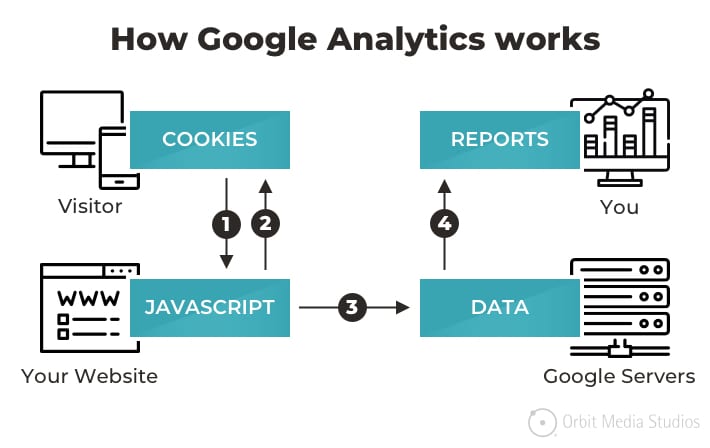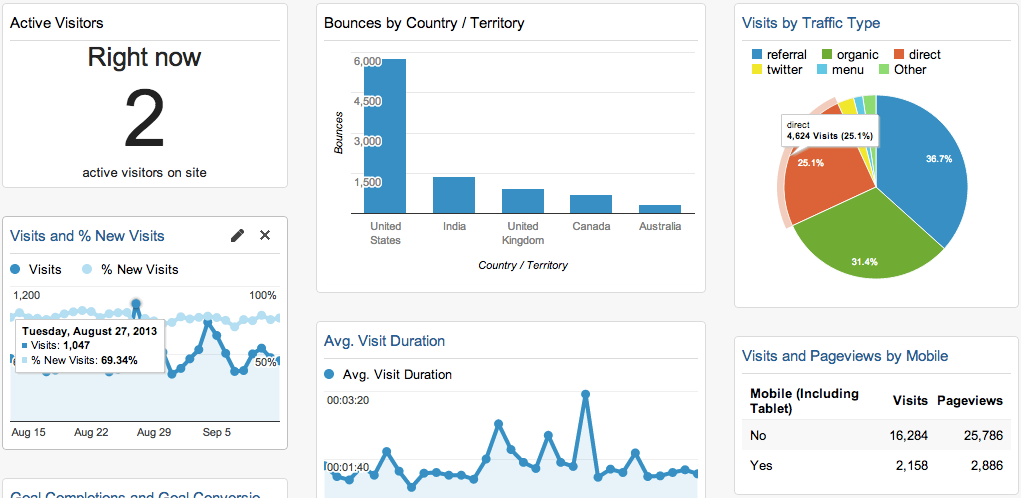Master Site Insights With Accurate Google Analytics Tracking Code
The effective application of Google Analytics hinges on the precise execution of its tracking code, a basic step usually ignored by website owners. What are the usual risks that could undermine your monitoring efforts, and exactly how can you ensure accuracy in your strategy?
Comprehending Google Analytics Essentials
Google Analytics is a vital device for site proprietors and online marketers, offering important insights right into user habits and web site performance. At its core, Google Analytics collects information concerning visitors to a web site, permitting users to examine metrics such as traffic sources, individual involvement, and conversion rates. Comprehending these principles is crucial for enhancing an internet site's effectiveness and improving individual experience.
The system uses cookies to track interactions, tape-recording information such as web page sights, session durations, and bounce rates. This info is aggregated and offered through adjustable control panels, enabling individuals to picture patterns gradually. Trick efficiency indications (KPIs) can be monitored, such as the total number of users, new versus returning visitors, and the geographic distribution of the audience.
Moreover, Google Analytics provides segmentation functions, enabling users to isolate particular web traffic sources or user demographics for even more targeted analysis. By mastering these foundational components, web site owners can make educated choices concerning content technique, advertising campaigns, and total site renovations. Eventually, understanding Google Analytics fundamentals is vital for leveraging data to drive growth and achieve business goals effectively.
Establishing Your Tracking Code

Duplicate the provided monitoring code and paste it right into the HTML of your web site. Ideally, this code needs to be put in the header area of every web page you want to track. This guarantees that the monitoring code tons prior to any kind of other web content, enabling it to catch data accurately. If you are making use of a material management system (CMS) like WordPress, there are plugins available that streamline the combination process.
After installment, confirm that the monitoring code is functioning properly by utilizing Google Tag Aide or the Real-Time reports in Google Analytics - when does the google analytics tracking code send an event hit to analytics?. This action is important to validate that your data collection is active and exact, setting the foundation for insightful analysis
Typical Tracking Code Issues
This may take place when the monitoring code is positioned in the wrong section of the website's HTML, frequently leading to insufficient or missing data. Furthermore, having multiple instances of the tracking code on a solitary page can result in filled with air metrics, as individual interactions could be counted a lot more than once.
One more problem arises from making use of ad blockers, which can protect against the monitoring code from implementing altogether, hence skewing data. when does the google analytics tracking code send an event hit to analytics?. In addition, failure to configure filters properly can lead to the exemption of essential traffic resources or the addition of undesirable referral spam, distorting the data gathered
Site owners might likewise overlook the importance of monitoring code updates, especially when migrating to Google Analytics 4 (GA4) from Universal Analytics. Last but not least, not enough screening prior to introducing changes can result in undetected mistakes in the monitoring code, additionally complicating information integrity. Resolving these typical issues is important for guaranteeing accurate monitoring and insightful analytics.
Analyzing Internet Site Data Effectively
Exact data collection is just the primary step in leveraging Google Analytics; the actual value hinges on properly examining that data to drive enlightened decision-making. To accomplish this, it is necessary to identify crucial performance indications (KPIs) that line up with your business objectives. Concentrate on metrics such as conversion prices, user engagement, and website traffic sources, as these will supply insights right into individual actions and the general performance of your web site.
Utilizing Google Analytics' division features enables for a much deeper understanding of your audience. By damaging down information into certain demographics, behaviors, and web traffic networks, you can uncover fads and patterns that inform targeted methods. Implementing custom-made reports and dashboards can simplify this process, allowing fast access to significant data.
In addition, on a regular basis assessing data patterns over time helps to recognize anomalies and chances for renovation. Utilize visualization tools to existing information in a conveniently absorbable format, assisting in extra effective communication with stakeholders. Eventually, the capacity to assess website data efficiently equips services to make critical choices that enhance user experience, optimize advertising initiatives, and drive development.

Finest Practices for Accurate Tracking
Applying efficient monitoring practices is crucial for obtaining reputable data in Google Analytics. To make sure exact monitoring, begin by appropriately setting up the Google Analytics tracking code on every web page of your web site. This can be accomplished via a tag supervisor or by straight installing the code right into the HTML.
Following, configure your Google Analytics blog here account to omit internal traffic. This can be done by establishing up filters that determine and eliminate visits from your organization's IP address, therefore preventing manipulated data. Furthermore, make use of event monitoring to keep track of specific individual communications, such as downloads or video clip plays, which typical page views may neglect.
Consistently examine your monitoring setup to validate that all attributes, such as goals and ecommerce monitoring, are functioning properly. Establish a consistent identifying convention for your campaigns and occasions to help with simpler reporting and evaluation.
Lastly, consider leveraging UTM specifications click here for more info for projects to obtain insights right into the efficiency of different advertising initiatives. By complying with these ideal methods, you can boost the accuracy of your information collection and evaluation, ultimately leading to even more enlightened decision-making for your website.
Conclusion
By making sure the monitoring code is properly positioned and on a regular basis audited, internet site owners can record vital individual interaction data, hence helping with the recognition of key efficiency indicators. Eventually, a durable monitoring framework improves the capacity to drive engagement and enhance general website performance.
Not enough testing prior to introducing modifications can result in undetected mistakes in the monitoring code, better complicating information dependability.Executing effective monitoring methods is important for obtaining reliable information in Google Analytics. By guaranteeing the monitoring code is properly placed and regularly examined, site proprietors can catch vital individual interaction information, thus promoting the identification of vital performance indications.